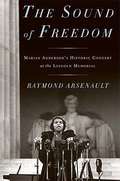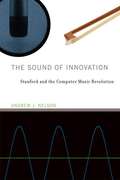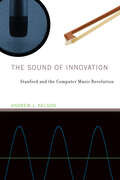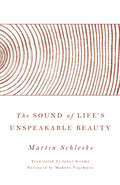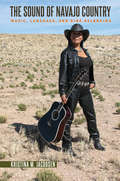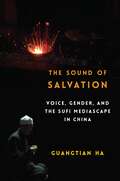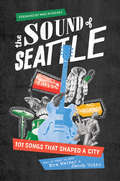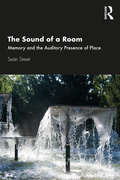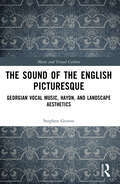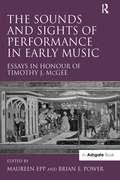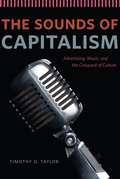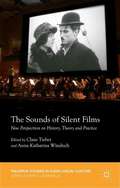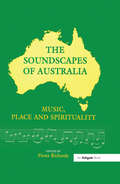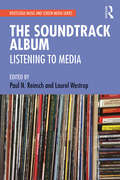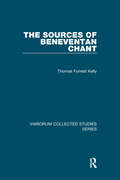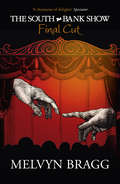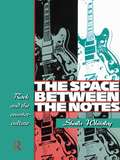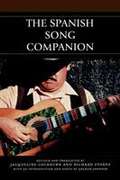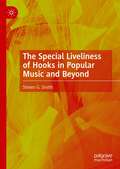- Table View
- List View
The Sound of Freedom: Marian Anderson, the Lincoln Memorial, and the Concert that Awakened America
by Raymond ArsenaultAward-winning civil rights historian Ray Arsenault describes the dramatic story behind Marian Anderson's concert at the Lincoln Memorial--an early milestone in civil rights history--on the seventieth anniversary of her performance. On Easter Sunday 1939, the brilliant vocalist Marian Anderson sang before a throng of seventy-five thousand at the Lincoln Memorial in Washington--an electrifying moment and an underappreciated milestone in civil rights history. Though she was at the peak of a dazzling career, Anderson had been barred from performing at the Daughters of the American Revolution's Constitution Hall because she was black. When Eleanor Roosevelt resigned from the DAR over the incident and took up Anderson's cause, however, it became a national issue. Like a female Jackie Robinson--but several years before his breakthrough--Anderson rose to a pressure-filled and politically charged occasion with dignity and courage, and struck a vital blow for civil rights. In the 1963 March on Washington, Martin Luther King would follow, literally, in Anderson's footsteps. This tightly focused, richly textured narrative by acclaimed historian Raymond Arsenault captures the struggle for racial equality in 1930s America, the quiet heroism of Marian Anderson, and a moment that inspired blacks and whites alike. You can find this concert on YouTube.
The Sound of Innovation
by Andrew J. NelsonIn the 1960s, a team of Stanford musicians, engineers, computer scientists, and psychologists used computing in an entirely novel way: to produce and manipulate sound and create the sonic basis of new musical compositions. This group of interdisciplinary researchers at the nascent Center for Computer Research in Music and Acoustics (CCRMA, pronounced "karma") helped to develop computer music as an academic field, invent the technologies that underlie it, and usher in the age of digital music. In The Sound of Innovation, Andrew Nelson chronicles the history of CCRMA, tracing its origins in Stanford's Artificial Intelligence Laboratory through its present-day influence on Silicon Valley and digital music groups worldwide. Nelson emphasizes CCRMA's interdisciplinarity, which stimulates creativity at the intersections of fields; its commitment to open sharing and users; and its pioneering commercial engagement. He shows that Stanford's outsized influence on the emergence of digital music came from the intertwining of these three modes, which brought together diverse supporters with different aims around a field of shared interest. Nelson thus challenges long-standing assumptions about the divisions between art and science, between the humanities and technology, and between academic research and commercial applications, showing how the story of a small group of musicians reveals substantial insights about innovation. Nelson draws on extensive archival research and dozens of interviews with digital music pioneers; the book's website provides access to original historic documents and other material.
The Sound of Innovation: Stanford and the Computer Music Revolution (Inside Technology)
by Andrew J. NelsonHow a team of musicians, engineers, computer scientists, and psychologists developed computer music as an academic field and ushered in the era of digital music.In the 1960s, a team of Stanford musicians, engineers, computer scientists, and psychologists used computing in an entirely novel way: to produce and manipulate sound and create the sonic basis of new musical compositions. This group of interdisciplinary researchers at the nascent Center for Computer Research in Music and Acoustics (CCRMA, pronounced “karma”) helped to develop computer music as an academic field, invent the technologies that underlie it, and usher in the age of digital music. In The Sound of Innovation, Andrew Nelson chronicles the history of CCRMA, tracing its origins in Stanford's Artificial Intelligence Laboratory through its present-day influence on Silicon Valley and digital music groups worldwide. Nelson emphasizes CCRMA's interdisciplinarity, which stimulates creativity at the intersections of fields; its commitment to open sharing and users; and its pioneering commercial engagement. He shows that Stanford's outsized influence on the emergence of digital music came from the intertwining of these three modes, which brought together diverse supporters with different aims around a field of shared interest. Nelson thus challenges long-standing assumptions about the divisions between art and science, between the humanities and technology, and between academic research and commercial applications, showing how the story of a small group of musicians reveals substantial insights about innovation. Nelson draws on extensive archival research and dozens of interviews with digital music pioneers; the book's website provides access to original historic documents and other material.
The Sound of Life's Unspeakable Beauty
by Martin Schleske&“In the final analysis, music is prayer cast into sound.&” One of the greatest luthiers of our time reveals the secrets of his profession—and how each phase of handcrafting a violin can point us toward our calling, our true selves, and the overwhelming power and gentleness of God&’s love. Schleske explains that our world is flooded with metaphors, parables, and messages from God. But are we truly listening? Do we really see? Drawing upon Scripture, his life experiences, and his insights as a master violinmaker, Schleske challenges readers to understand the world, ourselves, and the Creator in fresh ways. The message of this unique book is mirrored in sensitive photographs by Donata Wenders, whose work has appeared in prominent newspapers and magazines, including The New York Times, Rolling Stone, and Esquire, as well as museums and galleries throughout the world.
The Sound of Life's Unspeakable Beauty
by Martin SchleskeChristianity Today Book Award in Culture and the Arts (2021) &“In the final analysis, music is prayer cast into sound.&” One of the greatest luthiers of our time reveals the secrets of his profession—and how each phase of handcrafting a violin can point us toward our calling, our true selves, and the overwhelming power and gentleness of God&’s love. Schleske explains that our world is flooded with metaphors, parables, and messages from God. But are we truly listening? Do we really see? Drawing upon Scripture, his life experiences, and his insights as a master violinmaker, Schleske challenges readers to understand the world, ourselves, and the Creator in fresh ways. The message of this unique book is mirrored in sensitive photographs by Donata Wenders, whose work has appeared in prominent newspapers and magazines, including The New York Times, Rolling Stone, and Esquire, as well as museums and galleries throughout the world.
The Sound of Navajo Country: Music, Language, and Diné Belonging (Critical Indigeneities)
by Kristina M. JacobsenIn this ethnography of Navajo (Diné) popular music culture, Kristina M. Jacobsen examines questions of Indigenous identity and performance by focusing on the surprising and vibrant Navajo country music scene. Through multiple first-person accounts, Jacobsen illuminates country music’s connections to the Indigenous politics of language and belonging, examining through the lens of music both the politics of difference and many internal distinctions Diné make among themselves and their fellow Navajo citizens. As the second largest tribe in the United States, the Navajo have often been portrayed as a singular and monolithic entity. Using her experience as a singer, lap steel player, and Navajo language learner, Jacobsen challenges this notion, showing the ways Navajos distinguish themselves from one another through musical taste, linguistic abilities, geographic location, physical appearance, degree of Navajo or Indian blood, and class affiliations. By linking cultural anthropology to ethnomusicology, linguistic anthropology, and critical Indigenous studies, Jacobsen shows how Navajo poetics and politics offer important insights into the politics of Indigeneity in Native North America, highlighting the complex ways that identities are negotiated in multiple, often contradictory, spheres.
The Sound of Salvation: Voice, Gender, and the Sufi Mediascape in China (Studies of the Weatherhead East Asian Institute, Columbia University)
by Guangtian HaThe Jahriyya Sufis—a primarily Sinophone order of Naqshbandiyya Sufism in northwestern China—inhabit a unique religious soundscape. The hallmark of their spiritual practice is the “loud” (jahr) remembrance of God in liturgical rituals featuring distinctive melodic vocal chants.The first ethnography of this order in any language, The Sound of Salvation draws on nearly a decade of fieldwork to reveal the intricacies and importance of Jahriyya vocal recitation. Guangtian Ha examines how the use of voice in liturgy helps the Jahriyya to sustain their faith and the ways it has enabled them to endure political persecution over the past two and a half centuries. He situates the Jahriyya in a global multilingual network of Sufis and shows how their characteristic soundscapes result from transcultural interactions among Middle Eastern, Central Asian, and Chinese Muslim communities. Ha argues that the resilience of Jahriyya Sufism stems from the diversity and multiplicity of liturgical practice, which he shows to be rooted in notions of Sufi sainthood. He considers the movement of Jahriyya vocal recitation to new media forms and foregrounds the gendered opposition of male voices and female silence that structures the group’s rituals.Spanning diverse disciplines—including anthropology, ethnomusicology, Islamic studies, sound studies, and media studies—and using Arabic, Persian, and Chinese sources, The Sound of Salvation offers new perspectives on the importance of sound to religious practice, the role of gender in Chinese Islam, and the links connecting Chinese Muslims to the broader Islamic world.
The Sound of Seattle: 101 Songs that Shaped a City
by EVA WALKER Jacob UittiThis rockin' paperback explores the musical evolution of Seattle through the lens of 101 songs spanning 80 years, examining the most prominent and important music and musicians to come out of our corner of the country, with a foreword by Pearl Jam legend Mike McCready.KEXP DJ and musician Eva Walker and music writer Jake Uitti take readers on a musical journey, exploring the songs and artists instrumental to developing the "Seattle sound." The authors have curated the ultimate playlist for the Emerald City. It all begins in 1942 when Washington-born Bing Crosby records what will become the world's bestselling single of all time, "White Christmas." From there, readers will delight in a sensory trip through jazz, rock, punk, riot grrrl, pop, rap, grunge, indie, emo, and more, deepening their knowledge and love of the songs that shaped Seattle, and in the process, each of us.Both a love letter and love song to the city, The Sound of Seattle is a visual guide organized by decade, with seminal songs profiled and paired with inventive design reminiscent of a favorite zine or concert poster. Includes interviews with Seattle legends like Heart's Nancy Wilson, as well as sidebars showcasing musical landmarks throughout the city. How has the Emerald City&’s musical output changed and evolved? What is the connective tissue between Ray Charles, Quincy Jones, and Kenny G? Between Melvins, Sleater-Kinney, and Foo Fighters? Between Sir Mix-a-Lot, Macklemore, and Travis Thompson? We're gonna find out!
The Sound of a Room: Memory and the Auditory Presence of Place
by Seán StreetWhat does a place sound like – and how does the sound of place affect our perceptions, experiences, and memories? The Sound of a Room takes a poetic and philosophical approach to exploring these questions, providing a thoughtful investigation of the sonic aesthetics of our lived environments. Moving through a series of location-based case studies, the author uses his own field recordings as the jumping-off point to consider the underlying questions of how sonic environments interact with our ideas of self, sense of creativity, and memories. Advocating an awareness born of deep listening, this book offers practical and poetic insights for researchers, practitioners, and students of sound.
The Sound of the English Picturesque: Georgian Vocal Music, Haydn, and Landscape Aesthetics (Music and Visual Culture)
by Stephen GrovesRevealing the connections between the veneration of national landscape and eighteenth- century English vocal music, this study restores English music’s relationship with the picturesque. In the eighteenth century, the emerging taste for the picturesque was central to British aesthetics, as poets and painters gained popularity by glorifying the local landscape in works concurrent with the emergence of native countryside tourism. Yet English music was seldom discussed as a medium for conveying national scenic beauty. Stephen Groves explores this gap, and shows how secular song, the glee, and national theatre music expressed a uniquely English engagement with landscape. Using an interdisciplinary approach, Groves addresses the apparent ‘silence’ of the English picturesque. The book draws on analysis of the visualisations present in the texts of English vocal music, and their musical treatment, to demonstrate how local composers incorporated celebrations of landscape into their works. The final chapter shows that the English picturesque was a crucial influence on Joseph Haydn’s oratorio The Seasons. Suitable for anyone with an interest in eighteenth- century music, aesthetics, and the natural environment, this book will appeal to a wide range of specialists and non- specialists alike.
The Sounds and Sights of Performance in Early Music: Essays in Honour of Timothy J. McGee
by Maureen Ep Brian E. PowerThe experience of music performance is always far more than the sum of its sounds, and evidence for playing and singing techniques is not only inscribed in music notation but can also be found in many other types of primary source materials. This volume of essays presents a cross-section of new research on performance issues in music of the Middle Ages and Renaissance. The subject is approached from a broad perspective, drawing on areas such as dance history, art history, music iconography and performance traditions from beyond Western Europe. In doing so, the volume continues some of the many lines of inquiry pursued by its dedicatee, Timothy J. McGee, over a lifetime of scholarship devoted to practical questions of playing and singing early music. Expanding the bases of inquiry to include various social, political, historical or aesthetic backgrounds both broadens our knowledge of the issues pertinent to early music performance and informs our understanding of other cultural activities within which music played an important role. The book is divided into two parts: 'Viewing the Evidence' in which visually based information is used to address particular questions of music performance; and 'Reconsidering Contexts' in which diplomatic, commercial and cultural connections to specific repertories or compositions are considered in detail. This book will be of value not only to specialists in early music but to all scholars of the Middle Ages and Renaissance whose interests intersect with the visual, aural and social aspects of music performance.
The Sounds of Capitalism: Advertising, Music, and the Conquest of Culture
by Timothy D. TaylorFrom the early days of radio through the rise of television after World War II to the present, music has been used more and more to sell goods and establish brand identities. And since the 1920s, songs originally written for commercials have become popular songs, and songs written for a popular audience have become irrevocably associated with specific brands and products. Today, musicians move flexibly between the music and advertising worlds, while the line between commercial messages and popular music has become increasingly blurred. Timothy D. Taylor tracks the use of music in American advertising for nearly a century, from variety shows like The Clicquot Club Eskimos to the rise of the jingle, the postwar upsurge in consumerism, and the more complete fusion of popular music and consumption in the 1980s and after. The Sounds of Capitalism is the first book to tell truly the history of music used in advertising in the United States and is an original contribution to this little-studied part of our cultural history.
The Sounds of Paris in Verdi's La traviata
by Emilio Sala Delia CasadeiHow did Paris and its musical landscape influence Verdi's La traviata? In this book, Emilio Sala re-examines La traviata in the cultural context of the French capital in the mid-nineteenth century. Verdi arrived in Paris in 1847 and stayed for almost two years: there, he began his relationship with Giuseppina Strepponi and assiduously attended performances at the popular theatres, whose plays made frequent use of incidental music to intensify emotion and render certain dramatic moments memorable to the audience. It is in one of these popular theatres that Verdi witnessed one of the first performances of Dumas fils' La Dame aux camélias, which became hugely successful in 1852. Making use of primary source material, including unpublished musical works, journal articles and rare documents and images, Sala's close examination of the incidental music of La Dame aux camélias - and its musical context - offers an invaluable interpretation of La traviata's modernity.
The Sounds of Place: Music and the American Cultural Landscape (Music in American Life)
by Denise Von GlahnComposers like Charles Ives, Duke Ellington, Aaron Copland, and Ellen Taaffe Zwilich created works that indelibly commemorated American places. Denise Von Glahn analyzes the soundscapes of fourteen figures whose "place pieces" tell us much about the nation's search for its own voice and about its ever-changing sense of self. She connects each composer's feelings about the United States and their reasons for creating a piece to the music, while analyzing their compositional techniques, tunes, and styles. Approaching the compositions in chronological order, Von Glahn reveals how works that celebrated the wilderness gave way to music engaged with humanity's influence--benign and otherwise--on the landscape, before environmentalism inspired a return to nature themes in the late twentieth century. Wide-ranging and astute, The Sounds of Place explores high art music's role in the making of national myth and memory.
The Sounds of Silent Films
by Claus Tieber Anna K. WindischThe Sounds of Silent Films is a unique collection of investigatory and theoretical essays that, for the first time, unite up-to-date research on the complex historical performance practices of silent film accompaniment with in-depth analyses of relevant case studies.
The Soundscapes of Australia: Music, Place and Spirituality
by Fiona RichardsAustralia offers tremendous scope for understanding the relationship between music, spirituality and landscape. This major, generously-illustrated new volume examines, in fifteen chapters, some of the ways in which composers and performers have attempted to convey a sense of the Australian landscape through musical means. The book embraces the different approaches of ethnomusicology, gender studies, musical analysis, performance studies and cultural history. Ranging across the country, from remote parts of the Northern Territory to the bustling east coast cities, from Tasmanian wilderness to tropical Queensland, the book includes references to art and literature as well as music. Issues of national identity, belonging and aboriginalization are an integral part of the book, with indigenous responses to place examined alongside music from the western orchestral, chamber and choral repertories. The book provides valuable insight into a wide range of music inspired by Australia, from the Yanyuwa people to Jewish communities in Victoria; from Peter Sculthorpe's opera Quiros to the work of European expats living in Australia before the Second World War; from historic Ealing film scores to contemporary sound installations. The work of many significant composers is discussed in detail, among them Ross Edwards, Barry Conyngham, David Lumsdaine, Anne Boyd and Fritz Hart. Throughout the book there is a sense of the vibrancy and diversity of the music inspired by the sights and sounds of the Australian landscape.
The Soundtrack Album: Listening to Media
by Paul Reinsch Laurel WestrupThe Soundtrack Album: Listening to Media offers the first sustained exploration of the soundtrack album as a distinctive form of media. Soundtrack albums have been part of our media and musical landscape for decades, enduring across formats from vinyl and 8-tracks to streaming playlists. This book makes the case that soundtrack albums are more than promotional tools for films, television shows, or video games— they are complex media texts that reward a detailed analysis. The collection’s contributors explore a diverse range of soundtrack albums, from Super Fly to Stranger Things, revealing how these albums change our understanding of the music and film industries and the audio-visual relationships that drive them. An excellent resource for students of Music, Media Studies, and Film/Screen Media courses, The Soundtrack Album offers interdisciplinary perspectives and opens new areas for exploration in music and media studies.
The Sources of Beneventan Chant (Variorum Collected Studies #980)
by Thomas Forrest KellyThe area whose capital was the southern Lombard city of Benevento developed a culture identified with the characteristic form of writing known as the Beneventan script, which was used throughout the area and was brought to perfection at the abbey of Montecassino in the late eleventh century. This repertory, along with other now-vanished or suppressed local varieties of music, give a far richer picture of the variety of musical practice in early medieval Europe than was formerly available. Thomas Forrest Kelly has identified and collected the surviving sources of an important repertory of early medieval music; this is the so-called Beneventan Chant, used in southern Italy in the early middle ages, before the adoption there of the now-universal music known as Gregorian chant. Because it was deliberately suppressed in the course of the eleventh century, this music survives mostly in fragments and palimpsests, and the fascinating process of restoring the repertory piece by piece is told in the studies in this book. A companion volume to this collection also by Professor Kelly details the practice of Medieval music.
The South Bank Show: Final Cut
by Melvyn BraggWhat drives a musician to write extraordinary songs? How do writers create their worlds? How does an actor achieve greatness?For over thirty years of The South Bank Show, Melvyn Bragg has interviewed many of the greatest cultural icons of our age. These interviews offer revelatory insights into the lives and work of writers, actors, artists and musicians. In The South Bank Show: Final Cut he has revisited some of these artists and used the interviews as the basis for fuller portraits.The range of artists is remarkable and this book is true to The South Bank Show?s ethos of seeking out the highest quality whatever the art form.Melvyn Bragg?s unique perspective makes this book indispensable for anyone interested in the work and lives of some of the best artists of our time.
The South Bank Show: Final Cut
by Melvyn BraggWhat drives a musician to write extraordinary songs? How do writers create their worlds? How does an actor achieve greatness?For over thirty years of The South Bank Show, Melvyn Bragg has interviewed many of the greatest cultural icons of our age. These interviews offer revelatory insights into the lives and work of writers, actors, artists and musicians. In The South Bank Show: Final Cut he has revisited some of these artists and used the interviews as the basis for fuller portraits.The range of artists is remarkable and this book is true to The South Bank Show’s ethos of seeking out the highest quality whatever the art form.Melvyn Bragg’s unique perspective makes this book indispensable for anyone interested in the work and lives of some of the best artists of our time.
The Space Between the Notes: Rock and the Counter-Culture
by Sheila WhiteleyThe Space Between the Notes examines a series of relationships central to sixties counter-culture: psychedelic coding and rock music, the Rolling Stones and Charles Manson, the Beatles and the `Summers of love', Jimi Hendrix and hallucinogenics, Pink Floyd and space rock. Sheila Whiteley combines musicology and socio-cultural analysis to illuminate this terrain, illustrating her argument with key recordings of the time: Cream's She Walks Like a Bearded Rainbow, Hendrix's Hey Joe, Pink Floyd's Set the Controls For the Heat of the Sun, The Move's I Can Hear the Grass Grow, among others.The appropriation of progressive rock by young urban dance bands in the 1990s make this study of sixties and seventies counter-culture a timely intervention. It will inform students of popular music and culture, and spark off recognition and interest from those that lived through the period as well as a new generation that draw inspiration from its iconography and sensibilities today.
The Spanish Song Companion
by Richard Stokes Jacqueline CockburnThe Spanish song companion introduces the English-speaking reader to the rich heritage of Spanish songs. Here in one volume are the texts of over 300 songs with parallel translations in accurate and readable English. The majority are love poems, which form a fascinating anthology of Spanish poetry from the thirteenth to the twentieth century. The introduction by Graham Johnson, who in recent years has done more than anyone to kindle interest in the international song repertoire, traces the history of Spanish song from its beginning, via the period of the Catholic kings in the fifteenth century, the Golden Age of the sixteenth, through to the remarkable rebirth in the twentieth century. All the songs and cycles frequently heard in recital are gathered here: Albeniz, Falla, Granados, Rodrigo and Obradors are generously represented, as well as Catalan composers such as Montsalvatge and Mompou. The volume is arranged chronologically by composer, and includes notes on all the major poets and composers, a discography, and names and addresses of the music publishers. Jacqueline Cockburn is Head of History of Art at Westminster School and an associated lecturer at Birkbeck College, University of London. RICHARD STOKES is author of J. S. Bach: The Complete Cantatas (Scarecrow Press, 2004), The Book of Lieder (Faber and Faber, 2005), and co-author of A French Song Companion, with Graham Johnson (Oxford University Press, 2000). Graham Johnson, the founder of the internationally acclaimed Songmakers' Almanac, is an admired accompanist with an unrivaled knowledge of song literature. In this electronic edition, each line of Spanish is followed on the next line by its line in English translation. DAISY markup has chapters at level 1 and each poet and each song at level 2.
The Special Liveliness of Hooks in Popular Music and Beyond
by Steven G. SmithThis book illuminates the aesthetically underrated meaningfulness of particular elements in works of art and aesthetic experiences generally. Beginning from the idea of "hooks" in popular song, the book identifies experiences of special liveliness that are of enduring interest, supporting contemplation and probing discussion. When hooks are placed in the foreground of aesthetic experience, so is an enthusiastic “grabbing back” by the experiencer who forms a quasi-personal bond with the beloved singular moment and is probably inclined to share this still-evolving realization of value with others. This book presents numerous models of enthusiastic “grabbing back” that are art-critically motivated to explain how hooks achieve their effects and philosophically motivated to discover how hooks and hook appreciation contribute to a more ideally desirable life. Framing hook appreciation with a defensible general model of aesthetic experience, this book gives an unprecedented demonstration of the substantial aesthetic and philosophical interest of hook-centered inquiry.
The Spectral Piano
by Marilyn Nonken Hugues DufourtThe most influential compositional movement of the past fifty years, spectralism was informed by digital technology but also extended the aesthetics of pianist-composers such as Franz Liszt, Alexander Scriabin and Claude Debussy. Students of Olivier Messiaen such as Tristan Murail and Gérard Grisey sought to create a cooperative committed to exploring the evolution of timbre in time as a basis for the musical experience. In The Spectral Piano, Marilyn Nonken shows how the spectral attitude was influenced by developments in technology but also continued a tradition of performative and compositional virtuosity. Nonken explores shared fascinations with the musical experience, which united spectralists with their Romantic and early Modern predecessors. Examining Murail's Territoires de l'oubli, Jonathan Harvey's Tombeau de Messiaen, Joshua Fineberg's Veils, and Edmund Campion's A Complete Wealth of Time, she reveals how spectral concerns relate not only to the past but also to contemporary developments in philosophical aesthetics.
The Spirit of Music: The Lesson Continues
by Victor L. WootenGrammy Award winner Victor Wooten's inspiring parable of the importance of music and the threats that it faces in today's world. We may not realize it as we listen to the soundtrack of our lives through tiny earbuds, but music and all that it encompasses is disappearing all around us. In this fable-like story three musicians from around the world are mysteriously summoned to Nashville, the Music City, to join together with Victor to do battle against the "Phasers," whose blinking "music-cancelling" headphones silence and destroy all musical sound. Only by coming together, connecting, and making the joyful sounds of immediate, "live" music can the world be restored to the power and spirit of music.A VINTAGE ORIGINAL
